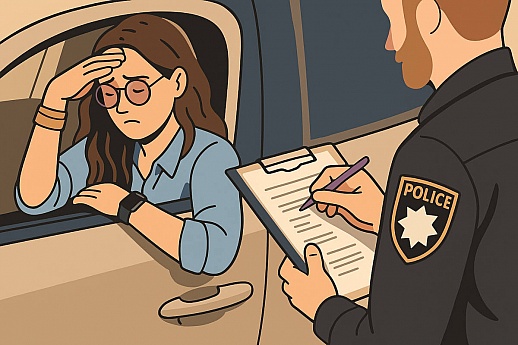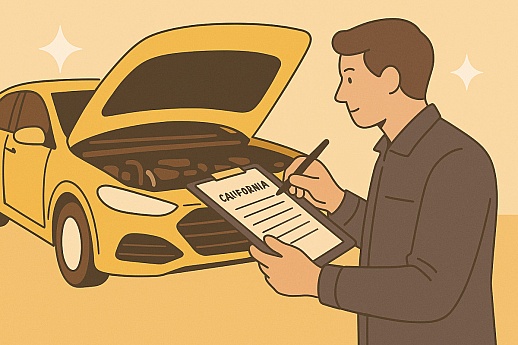Night Driving Tips: How to Drive Safely After Dark
Sarah's hands gripped the steering wheel tightly as she navigated the winding, dimly lit road. Her eyes squinted to adjust to the sudden glare of a truck passing by. While Sarah was able to make it home safely, stories like this don't always end that way.
Like Sarah, many people face challenges while driving at night, primarily due to reduced visibility. In this blog, we'll dissect the risks and challenges of nighttime driving and offer tips that make it safer for you and everyone else on the road.
Is Driving at Night Dangerous?
It's an unsettling statistic: Around 50% of all fatal car accidents occur during nighttime hours despite fewer cars on the road. So, what exactly makes driving at night more dangerous?
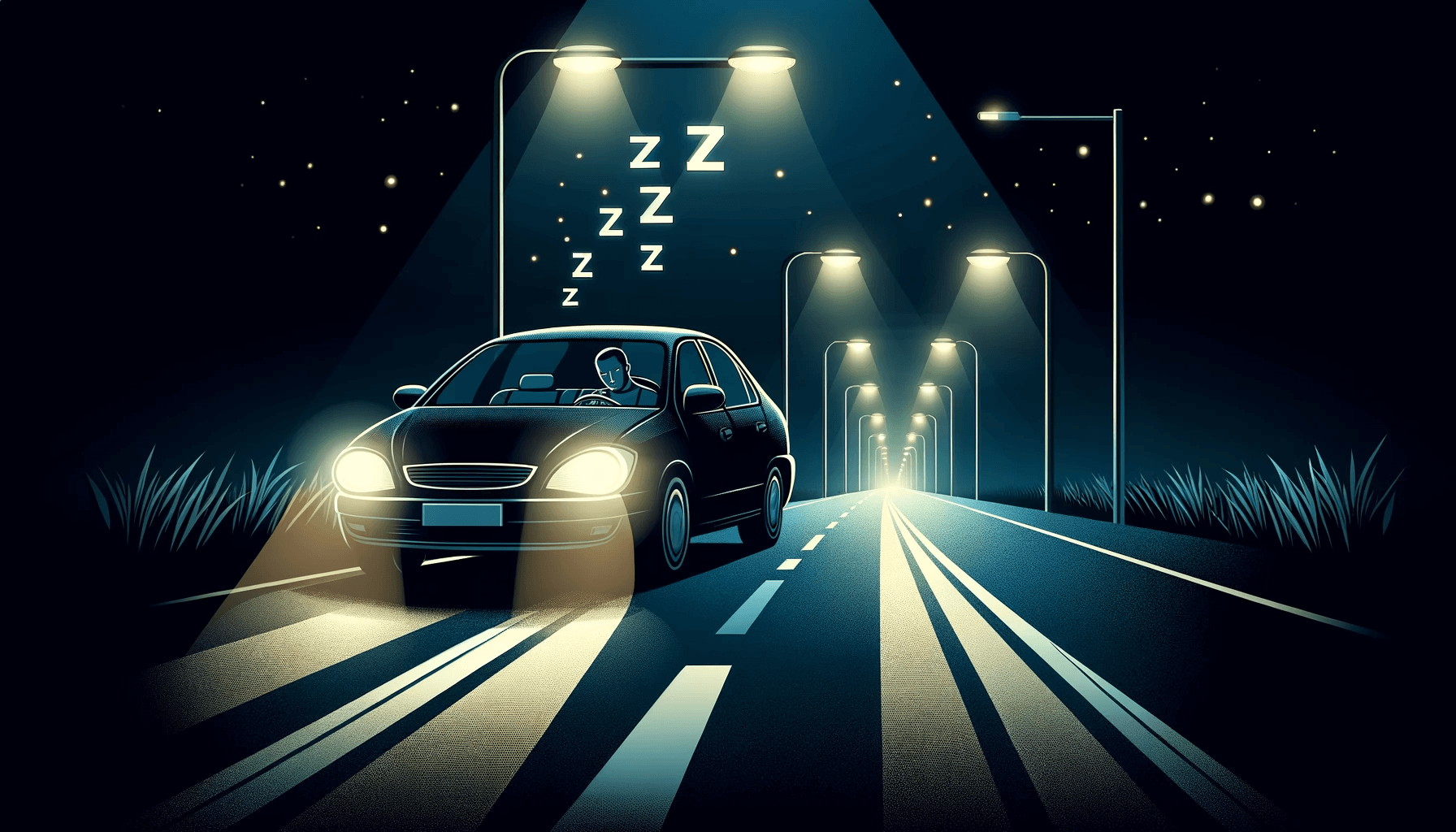 To give you a clearer picture, let's delve into the numerous factors that can make night driving more challenging:
To give you a clearer picture, let's delve into the numerous factors that can make night driving more challenging:
- Reduced Visibility: A lack of natural light and potentially insufficient street lighting can make seeing road signs, pedestrians, and other vehicles challenging. Fog and rain can exacerbate these conditions.
- Driver Fatigue: The late hours and the monotonous nature of the road can contribute to reduced alertness and slower reaction times. This is especially true for long-haul drivers or those who have had a long day.
- Impaired Drivers: According to the National Safety Council, the chances of encountering drivers under the influence of alcohol or drugs are higher at night.
- Higher Speeds: Reduced traffic often lures drivers into a false sense of security, tempting them to speed. Higher speeds limit reaction time and increase the severity of accidents.
- Wildlife Activity: Many animals, like deer and raccoons, are more active during dawn, dusk, and nighttime. A sudden appearance on the road can lead to dangerous swerving or collisions.
- Headlight Glare: Bright headlights from oncoming vehicles can cause temporary blindness, making it challenging to accurately assess the road conditions ahead.
- Inadequate Road Markings: Worn-out or missing lane markers and potholes are less visible at night, making it easier to drift from your lane unintentionally.
- Weather Conditions: Nighttime temperatures can cause dew or frost to form, making the roads slippery. This is especially true in late autumn and winter months.
- Reduced Depth Perception: Lower light conditions can affect your ability to judge distances accurately, leading to misjudgments in speed and distance.
- Pedestrian and Cyclist Risks: People walking or cycling are far less visible at night, and not all wear reflective clothing or use lights, increasing the risk of an accident.
Why Should You Drive Slower at Night?
According to the National Highway Traffic Safety Administration, speeding-related crashes account for 37% of nighttime-driving fatalities, a stark increase from 21% during daylight hours. This is attributed to lower visibility and reduced reaction times at night.
When driving at 40 mph, you need about 190 feet to stop completely. However, headlights usually only light up 160 feet ahead of you. This gap can make it tough to respond quickly to sudden obstacles like debris or animals on the road.
The limited reaction time at night becomes even more pressing because of the reduced visibility. It's not just a recommendation to slow down; it's a must for your safety and the safety of others. For example, reducing your speed by 10 mph can increase your stopping distance by approximately 45 feet, giving you extra time to react to unexpected obstacles.
Remember, the goal is to arrive and do so safely. Slowing down gives you the extra seconds to navigate unexpected situations safely when driving at night.
10 Tips for Driving at Night
As the sky darkens, so do the complexities of driving. Whether you’re driving home from work or cruising to a social engagement, the basic rules of the road remain constant.
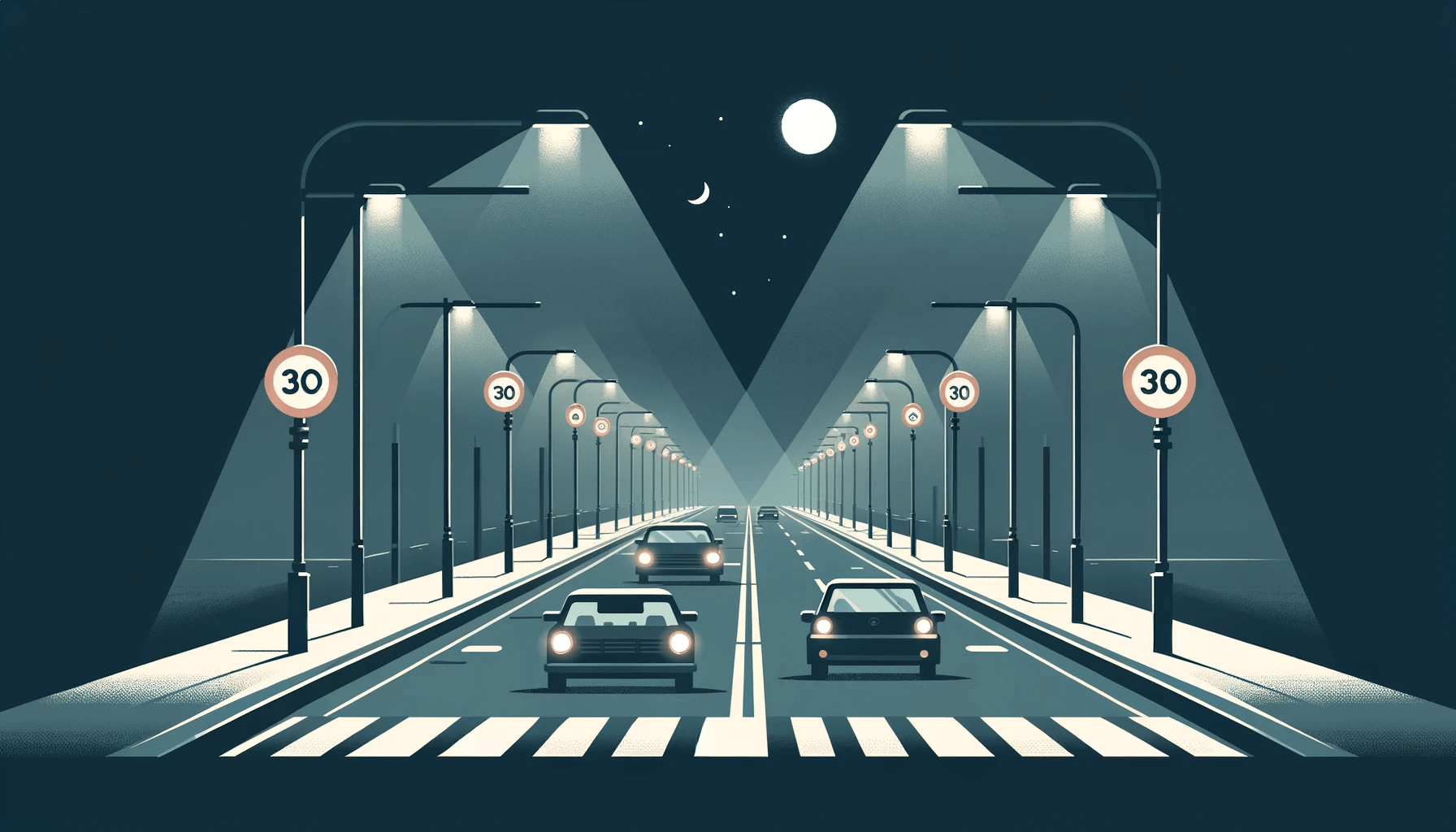 To help you navigate these conditions more safely, here are ten tips for driving after dark:
To help you navigate these conditions more safely, here are ten tips for driving after dark:
Tip 1: Keep Your Windshield Clean
A dirty windshield isn't just an aesthetic issue; it's a safety hazard. Dirt and grime can scatter the light from oncoming vehicles, amplifying glare and reducing visibility. Therefore, ensure that your windshield is sparkling clean, inside and out, before you embark on your nighttime journey. Use windshield washer fluid designed to remove stubborn stains and bugs for better clarity.
Tip 2: Adjust Your Rearview Mirror
At night, headlights from vehicles behind you can create distracting reflections in your rearview mirror. Many modern cars have night settings on their rearview mirrors to counter this. If your car has this feature, you'll usually find a small lever or tab at the bottom of the mirror. Flip or adjust this lever to switch to the night setting, minimizing glare and maintaining a clear view of the traffic behind you.
Tip 3: Consider Anti-Reflective Glasses
When glare from oncoming vehicles compromises your vision, anti-reflective or glare-reducing glasses can be a significant asset. You can find these glasses at automotive stores or opticians to help minimize glare and enhance your ability to see clearly, which is especially important when navigating nighttime roads.
Before purchasing, ensure the glasses meet a few key safety standards:
- Look for ANSI Z87.1 certification for lens impact resistance. This standard ensures that the lenses can withstand small debris, potentially kicked up from the road, without breaking.
- Ensure 100% UVA and UVB protection. Even though you're driving at night, consistent exposure to artificial lights can still damage your eyes over time. UVA and UVB protection will safeguard you against this.
- Verify they have a reputable anti-reflective coating. Brands with a good track record of durability and effectiveness are a safer bet.
Tip 4: Follow and Extend the Three-Second Rule
Maintaining a three-second gap between you and the vehicle in front during the daytime is the norm. However, your reaction time may be compromised at night due to limited visibility or fatigue. Extend that buffer to four or five seconds to give yourself adequate time to react to sudden stops or unexpected road hazards.
Tip 5: Avoid Staring at Oncoming Lights
Your eyes take time to adjust to low light conditions. Staring directly at the bright headlights of an approaching vehicle can cause a sort of 'flash blindness,' impairing your vision temporarily. Instead of directly staring at the lights of oncoming vehicles, shift your focus toward the edge of your lane or use your peripheral vision to gauge the oncoming traffic.
Tip 6: Take Regular Breaks (For Long-Distance Commuters)
Driving at night tends to be more tiring due to the body's natural inclination to sleep as it gets darker. If you’re commuting long distances, taking short breaks every couple of hours can make a significant difference in keeping your mind alert. During these breaks, stretch your legs, hydrate, and take deep breaths to refresh both body and mind.
Tip 7: Watch for Wildlife
In rural areas, deer, raccoons, and even large mammals like bears might cross the road, especially during dawn and dusk. The repercussions of hitting an animal can range from vehicle damage to severe injury. Always scan the road and its sides and be prepared to stop or slow down.
Tip 8: Keep Interior Lights Low
Bright dashboard lights and interior illumination can affect your eyes' ability to adjust to outside darkness, impairing your vision. If you're driving a newer vehicle, you'll likely find a dial or button specifically for adjusting the brightness of your dashboard lights, usually located on the instrument panel. Turn this dial to a lower setting until the dashboard lights are dim yet readable. This will help you maintain better focus and visibility while driving at night.
Tip 9: Use High Beams Wisely
High beams significantly improve your visibility but can blind other drivers if not used responsibly. Be courteous and switch to low beams when you see a vehicle approaching. High beams are best reserved for rural roads and areas with poor street lighting.
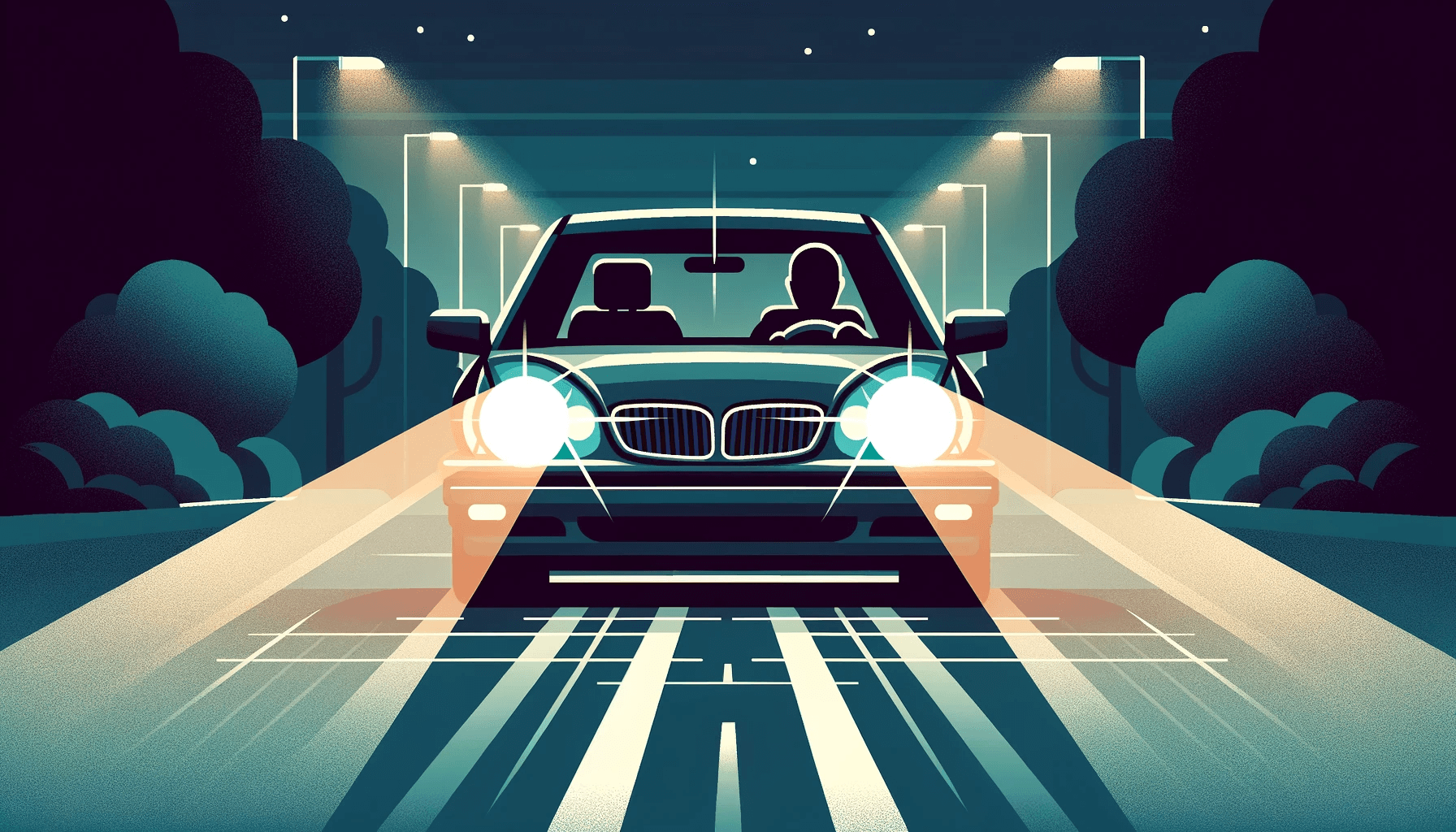 If your car is equipped with automatic high-beam dimming, make sure you activate this feature. You'll typically find this option in your car's settings menu or the headlight control stalk. Enabling this feature allows your car to automatically adjust the high beams when it detects an approaching vehicle or object, making the drive safer for everyone involved.
If your car is equipped with automatic high-beam dimming, make sure you activate this feature. You'll typically find this option in your car's settings menu or the headlight control stalk. Enabling this feature allows your car to automatically adjust the high beams when it detects an approaching vehicle or object, making the drive safer for everyone involved.
Tip 10: Check Your Lights
Lights are not just about seeing; they're also about being seen. Regularly inspect all the lights on your vehicle – headlights, taillights, brake lights, and turn signals. Ensure they're clean, functional, and properly aligned to offer optimal visibility and effectively communicate your intentions to other road users.
More About Driving Safely at Night
As night sets in, driving gets trickier, even for seasoned drivers. In this section, we delve deeper into specialized situations you might encounter, such as highway and freeway driving, dealing with eye conditions like astigmatism, and optimizing your car's headlights for maximum safety.
Driving on the Highway or Freeway at Night
Higher speeds on the highway demand a heightened sense of alertness, especially at night. To ensure you're driving safely:
- Avoid Two-Lane Highways: Opt for multi-lane highways or freeways over two-lane highways to minimize the risks associated with nighttime glare from oncoming vehicles' headlights. Two-lane highways tend to have sharper curves and hills, making them more dangerous during nighttime.
- Mind the Blind Spots: Be vigilant about staying out of other drivers' blind spots and check your own blind spots frequently. This is especially important when changing lanes or merging.
- Utilize Proper Lane Discipline: Use the right lane for entering and exiting the traffic flow. The left lane on highways is designated for passing. Avoid staying in the left lane if you are not overtaking other vehicles. Refrain from unnecessary lane changes, which could confuse or startle other drivers.
- Adjust Driving Speed: Night driving often requires reduced speeds to account for decreased visibility and potential hazards on the road. Slowing down allows more time to react to unexpected situations.
Driving at Night with Cruise Control
Cruise control can be convenient for maintaining a steady speed, but it comes with its own set of challenges when driving at night. Here's how you can ensure maximum safety:
- Monitor Road Conditions: Keep an eye on the road ahead for any changing conditions like bends, slopes, or variable speed limits that may require manual speed adjustments.
- Activate Safety Features: If your vehicle has adaptive cruise control with traffic-aware functionalities, make sure it's activated. This feature can adjust your speed based on the traffic ahead, which is particularly useful in low-visibility conditions.
- Stay Engaged: It's easy to become less attentive when using cruise control. Remind yourself to keep your hands on the wheel and foot near the brake, ready to take over manual control at a moment's notice.
- Know Your Off-Switch: Know how to quickly disengage the cruise control. Depending on the vehicle, cruise control can be turned off by pushing a button or tapping the brake.
- Use in Appropriate Settings: Cruise control best suits open roads with consistent driving conditions. Avoid using it in heavy traffic, curvy roads, or rapidly changing weather conditions like sudden rainfall or fog.
Night Driving with Astigmatism
Astigmatism can make driving at night more challenging due to distorted or blurred vision.
 Here are targeted tips to help you navigate the roads safely:
Here are targeted tips to help you navigate the roads safely:
- Anti-Reflective Coating: Choose prescription lenses with an anti-reflective coating. This minimizes glare and halo effects around lights, offering a clearer field of vision.
- Customized Lenses: Consult your optometrist about lenses designed to optimize your field of view for nighttime driving. These could include lens tints that reduce glare or improve contrast.
- Regular Eye Check-Ups: Since astigmatism can worsen over time, regular eye examinations ensure that your prescription remains up-to-date and adequate for driving at night.
- Proper Headlight Adjustment: Make sure your vehicle's headlights are adjusted to illuminate the road clearly without increasing glare, which can be especially problematic for people with astigmatism.
- Lane Positioning: Aim to drive in the middle or right-most lanes where you are less likely to be directly exposed to oncoming headlights, reducing glare that might exacerbate astigmatism.
Car Headlights at Night
Correct headlight usage and maintenance are indispensable when driving in the dark. Below are specific actions you can take to ensure you're utilizing your headlights effectively:
- Switch to LED or Halogen Bulbs: If your car is equipped with traditional incandescent bulbs, consider switching to LED or halogen options. They offer better brightness and a broader range of vision, helping you spot obstacles sooner.
- Alignment Check: Misaligned headlights can either blind other drivers or poorly illuminate the road ahead. Have your headlights professionally aligned, or refer to your vehicle's manual for DIY adjustment methods.
- Clean Lenses Regularly: Dirt and grime can significantly reduce the effectiveness of your headlights. Use a lens cleaning kit, toothpaste, and a cloth to scrub away any buildup.
- Automatic Brightness Settings: If your vehicle has a feature that adjusts headlight brightness according to driving conditions, make sure this is activated. This helps maintain optimum visibility without distracting other drivers.
- Adaptive Headlights: If your car is equipped with adaptive headlights that adjust with the steering, ensure that this feature is enabled for better illumination around curves.
Bottom Line
The roads after dark are full of mysteries and risks, from the unpredictability of other drivers to the limitations of human vision. Being prepared, aware, and equipped with the right information and tools can make a significant difference.
So, the next time you drive past the twilight, remember these tips and make your journey a safe and pleasant experience.
FAQ
Driving after dark often raises many questions, from concerns about visibility to optimizing vehicle conditions for a long journey. Below, we'll tackle the most commonly asked questions about nighttime driving.
Why Is It Hard to Drive at Night?
It's no secret that driving at night presents more challenges than daytime driving. The key factor here is the lower light conditions, which can significantly impact your depth perception, peripheral vision, and even your ability to recognize colors.
These limitations underscore the need to be extra cautious, especially when navigating unfamiliar roads or complex driving situations like heavy traffic or sharp turns.
How to Drive Better at Night?
Improving your ability to drive safely at night boils down to a few key points. Lighting is a significant factor – ensure your car's interior and exterior lighting are in optimal condition.
Choosing well-lit routes when possible is also a good idea, as improved lighting conditions will naturally make driving easier and safer. Reflective gear can also provide extra visibility, especially in areas with poor or no street lighting.
How to Prepare for a Long Drive at Night?
Preparing for a long nighttime drive involves a multi-step approach. Start by planning your route meticulously and consider including rest stops to break up the journey. Ensuring your vehicle is in top condition, including checking your lights and brakes, can save you from unnecessary trouble on the road.
Also, opting for full-coverage car insurance can offer an extra layer of protection, providing peace of mind during your trip. In addition, having short-term disability insurance can help cover a portion of your income if a nighttime accident leaves you temporarily unable to work, ensuring you’re financially protected while you recover.
Do Night Driving Glasses Work?
The topic of night driving glasses is still a subject of debate among experts and drivers alike. Some swear by the yellow-tinted lenses that promise to reduce glare and improve visibility. However, there is no definitive scientific evidence to support these claims.
So, while some drivers may find these glasses beneficial, your mileage may vary. If you're curious, try a pair and note how they impact your vision.
Sources
- National Library of Medicine. “Study on the Influence of Opposing Glare from Vehicle High-Beam Headlights Based on Drivers’ Visual Requirements.” Accessed Nov. 8, 2023.
- National Safety Council. “The Most Dangerous Time to Drive.” Accessed Nov. 8, 2023.
- National Highway Traffic Safety Administration. “Passenger Vehicle Occupant Fatalities by Day and Night – A Contrast.” Accessed Nov. 8, 2023.
- American Academy of Ophthalmology. “Night Vision.” Accessed Nov. 8, 2023.


